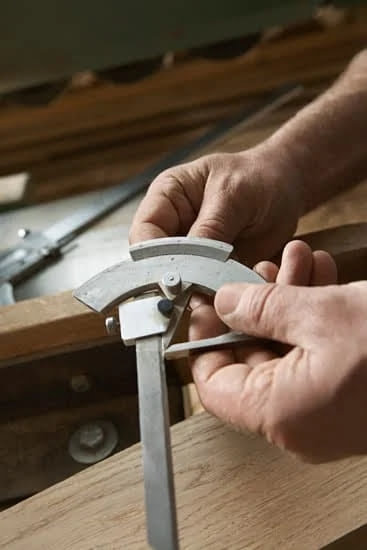If you’re a woodworker, you know that one of the most important pieces of equipment in your shop is a dust collector. Not only does a dust collector keep your shop clean and free of sawdust, it also helps to protect your lungs from the harmful dust particles that are created when you work with wood.
There are a number of different types of dust collectors available on the market, and it can be a little confusing to figure out which one is right for you. In this article, we’ll take a look at the different types of dust collectors and explain which one is best for woodworking.
The first type of dust collector is the single-stage collector. A single-stage collector is the simplest type of dust collector, and it is typically used for small shops. A single-stage collector consists of a motor, a filter, and a bag. The motor pulls the air through the filter, and the dust is trapped in the bag.
A single-stage collector is a good choice for a small shop, but it doesn’t have the capacity to handle a lot of dust. If you’re a woodworker who does a lot of sawing, routing, and sanding, you’ll need a dust collector with a higher capacity.
The next type of dust collector is the two-stage collector. A two-stage collector is similar to a single-stage collector, but it has a second filter. This second filter removes the larger particles of dust, which results in a cleaner airstream and less wear on the first filter.
A two-stage collector is a good choice for a shop that does a lot of sawing, routing, and sanding. It has the capacity to handle more dust than a single-stage collector, and it will last longer because it has two filters.
The next type of dust collector is the cyclone collector. A cyclone collector is a high-capacity collector that is designed to handle a large amount of dust. A cyclone collector consists of a motor, a cyclone separator, and a filter. The motor pulls the air through the cyclone separator, and the dust is separated from the air. The clean air is then pulled through the filter.
A cyclone collector is a good choice for a shop that does a lot of sawing, routing, and sanding. It has the capacity to handle more dust than a single-stage collector, and it will last longer because it has two filters.
The next type of dust collector is the baghouse collector. A baghouse collector is a high-capacity collector that is designed to handle a large amount of dust. A baghouse collector consists of a motor, a baghouse, and a filter. The motor pulls the air through the baghouse, and the dust is trapped in the bags. The clean air is then pulled through the filter.
A baghouse collector is a good choice for a shop that does a lot of sawing, routing, and sanding. It has the capacity to handle more dust than a single-stage collector, and it will last longer because it has two filters.
The final type of dust collector is the wet collector. A wet collector is a high-capacity collector that is designed to handle a large amount of dust. A wet collector consists of a motor, a wet separator, and a filter. The motor pulls the air through the wet separator, and the dust is separated from the air. The clean air is then pulled through the filter.
A wet collector is a good choice for a shop that does a lot of sawing, routing, and sanding. It has the capacity to handle more dust than a single-stage collector, and it will last longer because it has two filters.
So, which type of dust collector is best for woodworking?
If you’re a woodworker who does a lot of sawing, routing, and sanding, we recommend a two-stage collector or a cyclone collector. These collectors have the capacity to handle a large amount of dust, and they will last longer because they have two filters.
Is Woodworking The Same As Carpentry?
The terms woodworking and carpentry are often used interchangeably, but there is a distinction between the two fields. Woodworking is the process of working with wood to create a product, while carpentry is the trade of a carpenter, which involves the construction and repair of buildings and other structures.
Woodworking can include the creation of furniture, cabinets, or other objects made from wood. It can also involve the use of power tools and hand tools to shape and cut the wood. Carpentry, on the other hand, is typically more focused on construction, using lumber and other materials to create a structure.
Many woodworkers also have carpentry skills, and vice versa. But there are some differences between the two trades. Carpenters typically have a more comprehensive knowledge of construction, while woodworkers may have more experience with woodworking techniques and tools.
Woodworking is a popular hobby and there are many online courses and tutorials that can teach you the basics. If you’re interested in pursuing carpentry as a trade, there are many vocational schools that offer carpentry programs.
Monthly Woodworking Kit For Adults
Most adults enjoy working with their hands and find satisfaction in completing a project from start to finish. Woodworking is a great way to do just that! Not only is it a fun and rewarding hobby, but it can also be a source of income.
If you are just starting out in woodworking, or you are looking for a way to take your hobby to the next level, a monthly woodworking kit may be just what you need. These kits include all of the supplies and tools you need to complete a project, plus a project plan and instructions.
There are many different monthly woodworking kits available, so you can find one that fits your skill level and interests. Kits range from simple projects, like a birdhouse or a picture frame, to more complex projects, like a dining room table or a cabinet.
No matter what your skill level or interests, there is a monthly woodworking kit for you. These kits make it easy to get started in woodworking, and they provide you with the supplies and tools you need to complete a project. Plus, they include project plans and instructions, so you can easily complete the project.
If you are looking for a new hobby, or you want to take your woodworking skills to the next level, a monthly woodworking kit may be just what you need. These kits include all of the supplies and tools you need to complete a project, plus a project plan and instructions.
Woodworking Supplies Orange County
There are many different types of woodworking supplies that can be found in Orange County. The most common type of woodworking supply is wood. Wood can be used for a variety of different projects, including furniture, cabinets, and other home improvement projects.
Another type of woodworking supply that can be found in Orange County is hardware. Hardware can be used to attach pieces of wood together or to other objects. There are many different types of hardware available, including screws, nails, and bolts.
In addition to wood and hardware, there are also many different types of tools that can be used for woodworking. Tools include saws, hammers, and drills. These tools can be used to create different types of projects, such as furniture, cabinets, and other home improvement projects.
Finally, there are also many different types of finishing supplies that can be used for woodworking projects. Finishing supplies include paint, varnish, and stain. These supplies can be used to give wood a finished look.
How To Make Rounded Corners Woodworking
There are a few different ways to make rounded corners on woodworking projects. In this article, we will discuss the most common ways to make rounded corners on woodworking projects.
One way to make rounded corners is to use a router with a rounding bit. This is a good way to make round corners on large projects. The router will allow you to make rounded corners quickly and easily.
Another way to make rounded corners is to use a jigsaw. This is a good way to make rounded corners on smaller projects. The jigsaw will allow you to make rounded corners quickly and easily.
Another way to make rounded corners is to use a file. This is a good way to make rounded corners on small projects. The file will allow you to make rounded corners slowly and carefully.
whichever way you choose to make rounded corners, be sure to use a sandpaper to smooth out the edges.

Hi everyone! I’m a woodworker and blogger, and this is my woodworking blog. In my blog, I share tips and tricks for woodworkers of all skill levels, as well as project ideas that you can try yourself.





